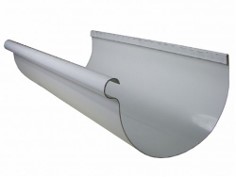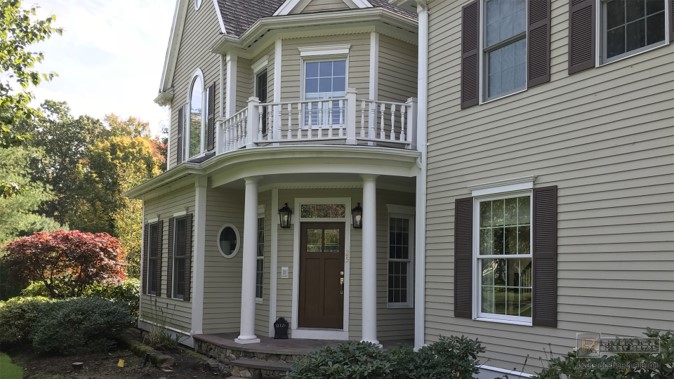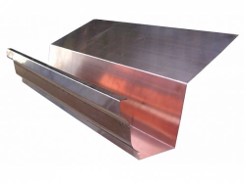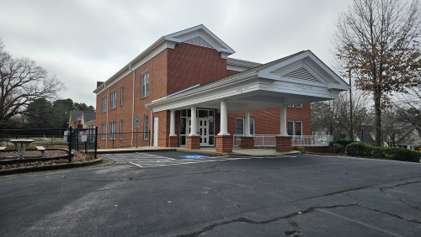Gutters Repair & Installation Raleigh
Gutter Installation, Gutter Repair & Gutter Maintenance Services in Raleigh
Acting as an outdoor plumbing system, gutters carry captured water away from your home to avoid foundation issues. They also protect your roof from water damage and ice dams.
Our Gutters Services include…
Installation – We offer custom gutters made to fit your home and aesthetic.
View Gutter Types >
Gutter Guards – Our top of the line gutter guards protect your gutters from becoming clogged by debris and roof granules, ultimately extending the life of your gutters and protecting your home.
View Gutter Guard Options >
Gutter Repair – We can repair your existing gutters after an assessment of the repairs needed, or advise you on a replacement. Our team of experts will evaluate your system, provide recommendations and have your gutter repaired. Our gutter repairs Raleigh services ensure your gutters work at an optimal level.
View Common Gutter Issues >
Gutter Types and Sizes
Seamless Aluminum Gutters
Old Colony Roofing installs seamless aluminum gutters in 5” or 6” sizes. Gutter Fastening systems are galvanized for long lasting duration.

This is a K-Style Aluminum Gutter. The profile stays the same but can go from a 5, 6, 7, 8 inch gutter depending on the application.

Aluminum Half round gutters can give a house a distinctive look and come in 5 & 6 inch normally, but can be made larger depending on the application.
Aluminum Downspouts

Traditional 2x3 & 3x4 inch aluminum downspouts.

Aluminum Round downspouts 4, 5 inch diameters.

Aluminum Round Corrugated downspouts 4, 5 inch diameters.

Copper Gutters
Old Colony Roofing specializes in all types of copper fabrication.

Copper K-Style Gutters. The profile stays the same but can go from a 5, 6, 7, 8 inch gutter depending on the application.

Copper Gutter Guards. A gutter screen with a distinctive look.

Copper Half Round Reverse Bead Gutters. Available in 6 inch size.

Copper K Style Highback Gutters. Available in 5, 6, 7, 8 inch sizes.
Copper Downspouts

Rectangular Copper Downspouts

Smooth Round Copper Downspouts

Corrugated Round Copper Downspouts

Questions? Ready for an Evaluation?
Let us know how we can help!

This house has been fitted with 6” K style seamless gutters to ensure proper water management to the oversized 3”x4” downspouts.
As we stated earlier over 95% of homes should have 6 inch gutters. The reasons for this are:
- The roof overhang extension
- The roof has a severe pitch/slope, the house has big valleys and dormers that create a tobogganing of water coming towards the gutters.

Determining the gutter runs or lengths to determine where downspouts will be placed. The church pictured here has some long runs and will need careful consideration on the layout.
The length of runs are determined by gutter and downspout size.
Normally, 25-35 feet is the max run between downspouts when using a 5” gutter. And 45-65 is a good max run using 6 inch gutters.
Gutter Repairs and Maintenance in Raleigh NC
Common Gutter Issues

Clogged Gutters
If you are lucky this is as simple as cleaning out the gutters and the downspouts ensuring a free flow for incoming water. After cleaned, a determination of the gutter pitch should be evaluated.

Improper Gutter Pitching
This picture is an example of improper gutter pitching. The question is; how did they get to this point? Were they originally installed with the proper pitch / slope? A thorough investigation by an experienced gutter contractor will be able to determine the following possibilities for the current gutter situation.

Gutter Slope
The general rule of thumb is that your rain gutter slope should be anywhere from ¼ to ½ of an inch per every 10 feet of gutter. However, this may change depending on the home, as some houses can have differences in how their roof slopes along the gutters, among other factors.

Rotted Fascia
During any gutter evaluation, an inspection of the trees around the home is necessary. Sometimes a trimming can alleviate the clogging and other times a good gutter screen or helmet will solve this.
In this photo, the rotted fascia has changed the slop of the gutters by the rotting wood. In addition, an obsolete method of gutter installation known as Spike and Ferrule* has been used. This was popular 40 years prior.
*The “spike” refers to the long nail that is installed through the gutter lip, the “Ferrule” (sleeve), though the back of the gutter and ½” to ¾” makes it into the fascia.

Lack of Gutters Completely
The soffit damage in this photo is a common occurrence when inspecting houses without gutters. The soffit is showing significant water damage. This is a roof problem.
Water is coming through this area and directly onto the soffit creating rot. This picture brings up an excellent question, we are often asked:
Over 95% OF HOUSES NEED A GUITTER SYSTEM

Damaged Downspouts
A downspout inspection is imperative. Inspecting the seams on the back or sides of downspouts can tell you a lot. This happens during cold spells, the age of the downspouts, and the sheer volume of water coming through the downspouts. This helps identify whether the downspout spacing is correct, as well as the size of the gutters and downspouts.
You can clearly see the damaged stamp seam in this photo.
Questions? Ready for an Evaluation?
Let us know how we can help!
Gutter Inspection - the OCR Difference.
Traditionally, (70% of the time) gutters start out properly pitched. Now, this is where an expert can make all the difference. A contractor with decades of experience inherently knows what to look for. If we’ve received a call about a gutter problem and an evaluation is requested, here is the mental checklist that we at Old Colony Roofing are looking at.
Around the Home:
- Inspect the surrounding areas, trees, rooflines, roof pitches, valleys on the roof and downspout placement. This is all done in the first ten minutes of evaluation during a walk around with the homeowner.
On the Ladder:
It is imperative to inspect the following before the evaluation is complete. (If someone walks around the house in a minute and tries to give you a gutter estimate or a roof estimate for that matter, you will be disappointed in the outcome.)
- The fascia must be checked.
When fascia (the wood behind the gutter) rots, the fasteners shift. This will change the pitch of the gutters and create a clogged gutter or water that never moves to the downspouts. This will create a lot of weight on the gutter system, which ultimately causes sagging and gutters pulling away from the house and fascia. - What kind of fasteners were used during the installation.
Was it a small nail or screw which will pull away from the fascia? Was the Spike and Ferrule fastener used? Do the fasteners penetrate the fascia and go into the rafter? - Inspecting the soffit areas is important as well.
In most cases soffit damage is a result of the roof eave or gutter and fascia malfunction that allows water onto the soffit creating rotting of the soffit. - Inspect the proper gutter size for the house.
Many houses are installed with 5” gutters which are not capable of moving the water as it should.










